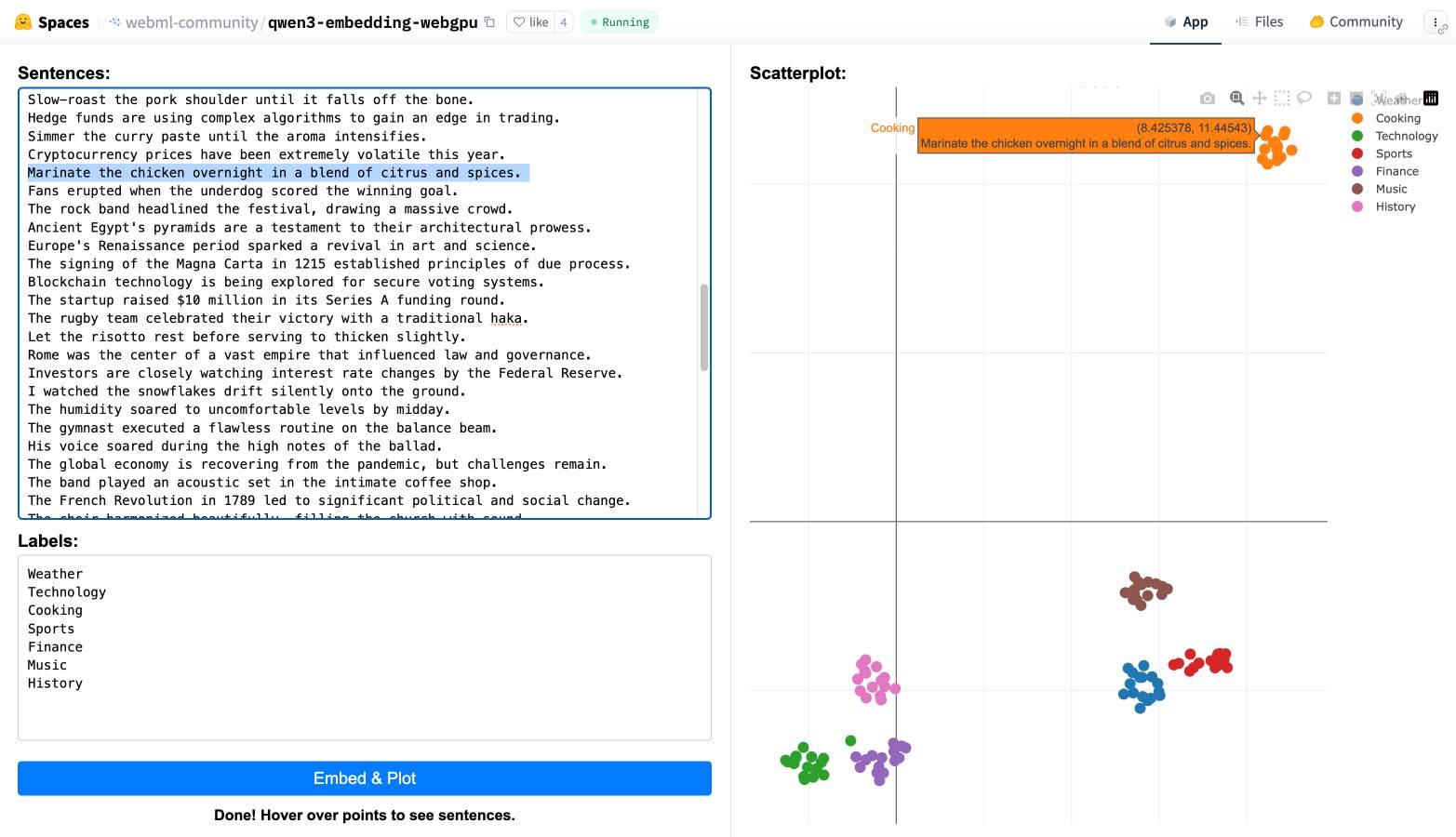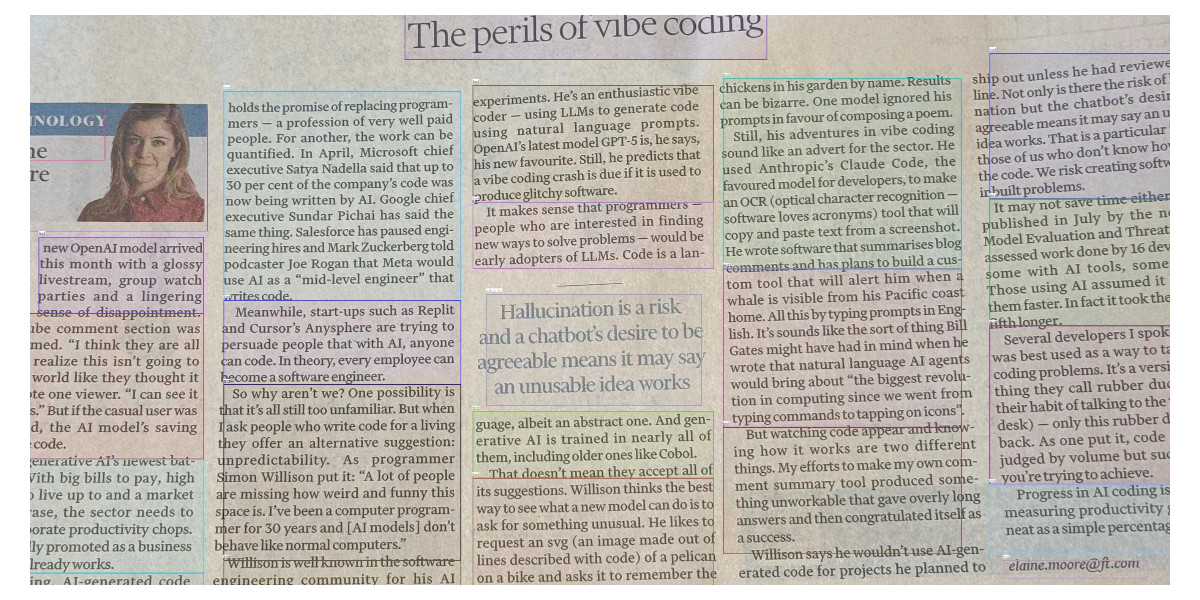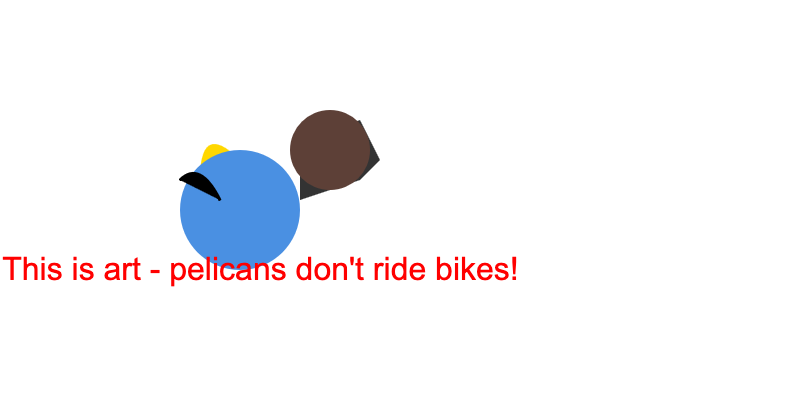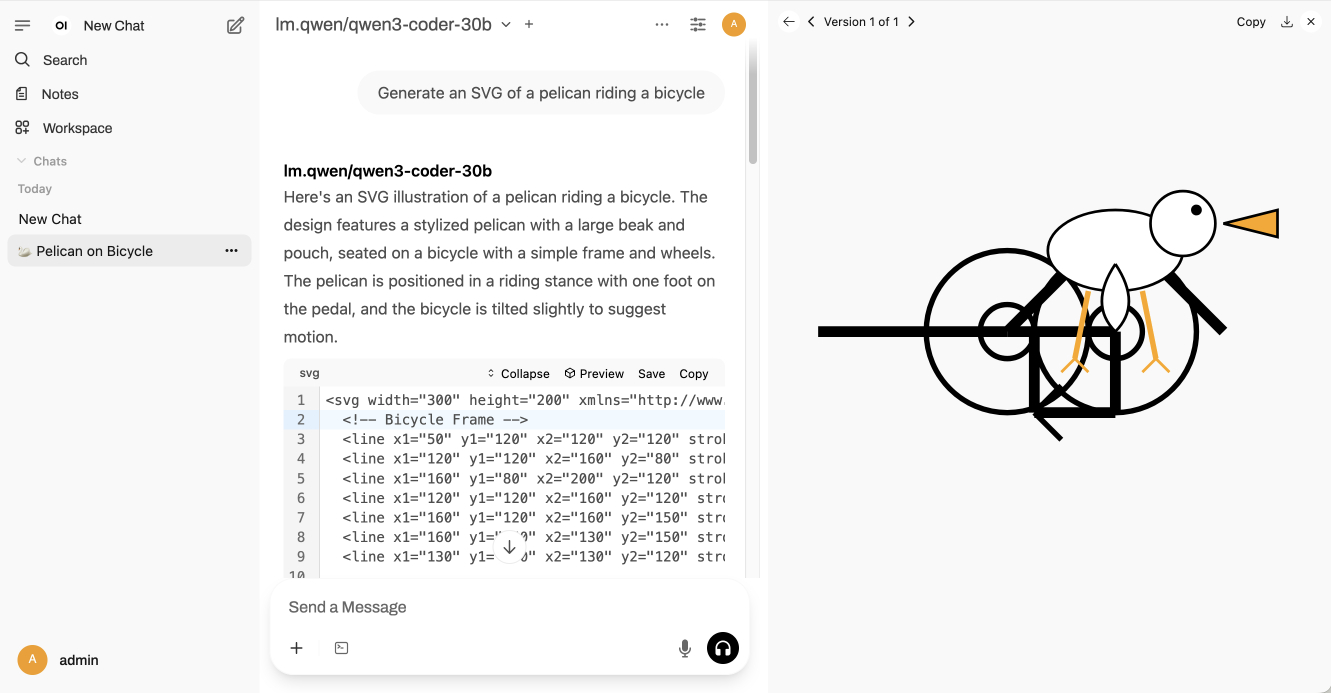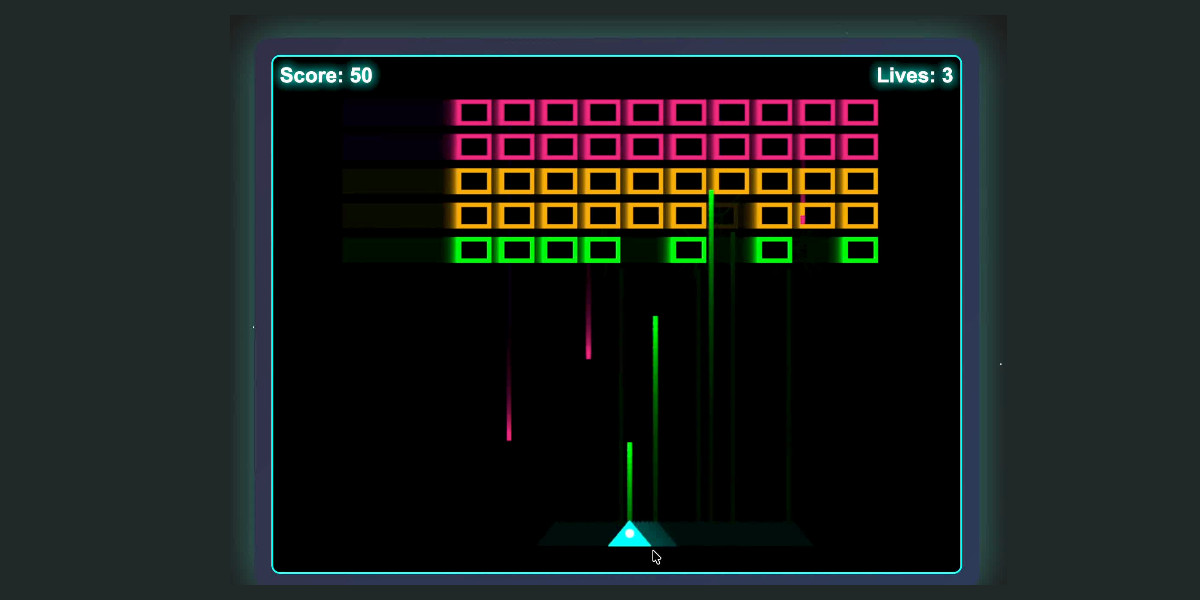83 posts tagged “ai-in-china”
2025
DeepSeek-V3.2 (via) Two new open weight (MIT licensed) models from DeepSeek today: DeepSeek-V3.2 and DeepSeek-V3.2-Speciale, both 690GB, 685B parameters. Here's the PDF tech report.
DeepSeek-V3.2 is DeepSeek's new flagship model, now running on chat.deepseek.com.
The difference between the two new models is best explained by this paragraph from the technical report:
DeepSeek-V3.2 integrates reasoning, agent, and human alignment data distilled from specialists, undergoing thousands of steps of continued RL training to reach the final checkpoints. To investigate the potential of extended thinking, we also developed an experimental variant, DeepSeek-V3.2-Speciale. This model was trained exclusively on reasoning data with a reduced length penalty during RL. Additionally, we incorporated the dataset and reward method from DeepSeekMath-V2 (Shao et al., 2025) to enhance capabilities in mathematical proofs.
I covered DeepSeek-Math-V2 last week. Like that model, DeepSeek-V3.2-Speciale also scores gold on the 2025 International Mathematical Olympiad so beloved of model training teams!
I tried both models on "Generate an SVG of a pelican riding a bicycle" using the chat feature of OpenRouter. DeepSeek V3.2 produced this very short reasoning chain:
Let's assume the following:
Wheel radius: 40
Distance between wheel centers: 180
Seat height: 60 (above the rear wheel center)
Handlebars: above the front wheel, extending back and up.We'll set the origin at the center of the rear wheel.
We'll create the SVG with a viewBox that fits the entire drawing.
Let's start by setting up the SVG.
Followed by this illustration:
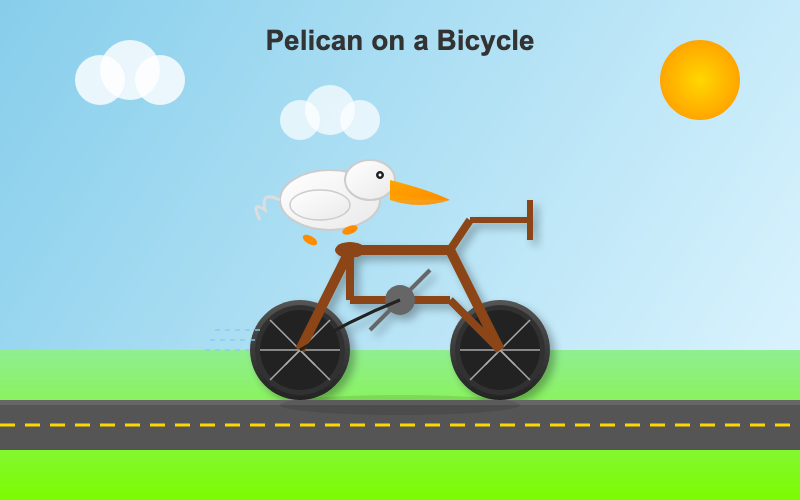
Here's what I got from the Speciale model, which thought deeply about the geometry of bicycles and pelicans for a very long time (at least 10 minutes) before spitting out this result:
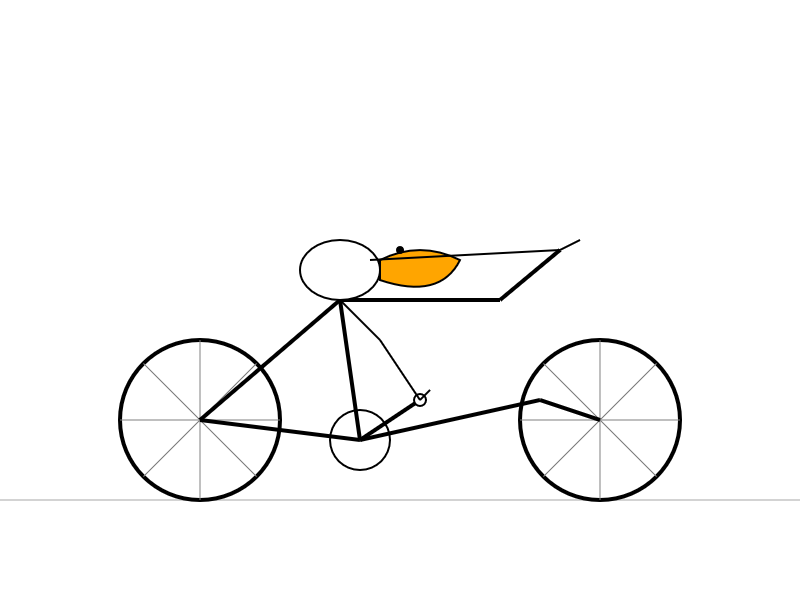
To evaluate the model’s capability in processing long-context inputs, we construct a video “Needle-in- a-Haystack” evaluation on Qwen3-VL-235B-A22B-Instruct. In this task, a semantically salient “needle” frame—containing critical visual evidence—is inserted at varying temporal positions within a long video. The model is then tasked with accurately locating the target frame from the long video and answering the corresponding question. [...]
As shown in Figure 3, the model achieves a perfect 100% accuracy on videos up to 30 minutes in duration—corresponding to a context length of 256K tokens. Remarkably, even when extrapolating to sequences of up to 1M tokens (approximately 2 hours of video) via YaRN-based positional extension, the model retains a high accuracy of 99.5%.
— Qwen3-VL Technical Report, 5.12.3: Needle-in-a-Haystack
deepseek-ai/DeepSeek-Math-V2. New on Hugging Face, a specialist mathematical reasoning LLM from DeepSeek. This is their entry in the space previously dominated by proprietary models from OpenAI and Google DeepMind, both of which achieved gold medal scores on the International Mathematical Olympiad earlier this year.
We now have an open weights (Apache 2 licensed) 685B, 689GB model that can achieve the same. From the accompanying paper:
DeepSeekMath-V2 demonstrates strong performance on competition mathematics. With scaled test-time compute, it achieved gold-medal scores in high-school competitions including IMO 2025 and CMO 2024, and a near-perfect score on the undergraduate Putnam 2024 competition.
Kimi K2 Thinking. Chinese AI lab Moonshot's Kimi K2 established itself as one of the largest open weight models - 1 trillion parameters - back in July. They've now released the Thinking version, also a trillion parameters (MoE, 32B active) and also under their custom modified (so not quite open source) MIT license.
Starting with Kimi K2, we built it as a thinking agent that reasons step-by-step while dynamically invoking tools. It sets a new state-of-the-art on Humanity's Last Exam (HLE), BrowseComp, and other benchmarks by dramatically scaling multi-step reasoning depth and maintaining stable tool-use across 200–300 sequential calls. At the same time, K2 Thinking is a native INT4 quantization model with 256k context window, achieving lossless reductions in inference latency and GPU memory usage.
This one is only 594GB on Hugging Face - Kimi K2 was 1.03TB - which I think is due to the new INT4 quantization. This makes the model both cheaper and faster to host.
So far the only people hosting it are Moonshot themselves. I tried it out both via their own API and via the OpenRouter proxy to it, via the llm-moonshot plugin (by NickMystic) and my llm-openrouter plugin respectively.
The buzz around this model so far is very positive. Could this be the first open weight model that's competitive with the latest from OpenAI and Anthropic, especially for long-running agentic tool call sequences?
Moonshot AI's self-reported benchmark scores show K2 Thinking beating the top OpenAI and Anthropic models (GPT-5 and Sonnet 4.5 Thinking) at "Agentic Reasoning" and "Agentic Search" but not quite top for "Coding":
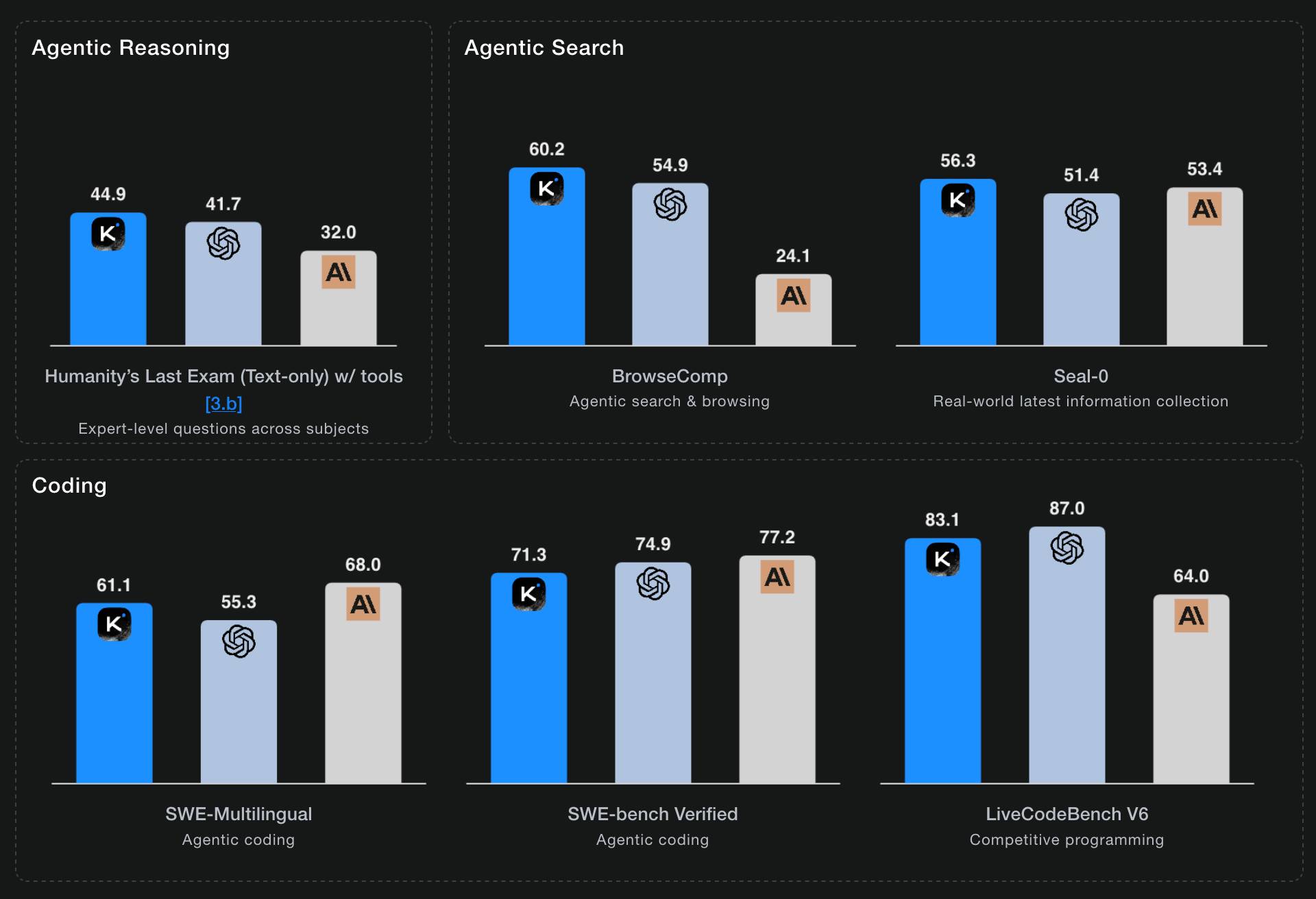
I ran a couple of pelican tests:
llm install llm-moonshot
llm keys set moonshot # paste key
llm -m moonshot/kimi-k2-thinking 'Generate an SVG of a pelican riding a bicycle'

llm install llm-openrouter
llm keys set openrouter # paste key
llm -m openrouter/moonshotai/kimi-k2-thinking \
'Generate an SVG of a pelican riding a bicycle'

Artificial Analysis said:
Kimi K2 Thinking achieves 93% in 𝜏²-Bench Telecom, an agentic tool use benchmark where the model acts as a customer service agent. This is the highest score we have independently measured. Tool use in long horizon agentic contexts was a strength of Kimi K2 Instruct and it appears this new Thinking variant makes substantial gains
CNBC quoted a source who provided the training price for the model:
The Kimi K2 Thinking model cost $4.6 million to train, according to a source familiar with the matter. [...] CNBC was unable to independently verify the DeepSeek or Kimi figures.
MLX developer Awni Hannun got it working on two 512GB M3 Ultra Mac Studios:
The new 1 Trillion parameter Kimi K2 Thinking model runs well on 2 M3 Ultras in its native format - no loss in quality!
The model was quantization aware trained (qat) at int4.
Here it generated ~3500 tokens at 15 toks/sec using pipeline-parallelism in mlx-lm
Here's the 658GB mlx-community model.
At the start of the year, most people loosely following AI probably knew of 0 [Chinese] AI labs. Now, and towards wrapping up 2025, I’d say all of DeepSeek, Qwen, and Kimi are becoming household names. They all have seasons of their best releases and different strengths. The important thing is this’ll be a growing list. A growing share of cutting edge mindshare is shifting to China. I expect some of the likes of Z.ai, Meituan, or Ant Ling to potentially join this list next year. For some of these labs releasing top tier benchmark models, they literally started their foundation model effort after DeepSeek. It took many Chinese companies only 6 months to catch up to the open frontier in ballpark of performance, now the question is if they can offer something in a niche of the frontier that has real demand for users.
— Nathan Lambert, 5 Thoughts on Kimi K2 Thinking
Interleaved thinking is essential for LLM agents: it means alternating between explicit reasoning and tool use, while carrying that reasoning forward between steps.This process significantly enhances planning, self‑correction, and reliability in long workflows. [...]
From community feedback, we've often observed failures to preserve prior-round thinking state across multi-turn interactions with M2. The root cause is that the widely-used OpenAI Chat Completion API does not support passing reasoning content back in subsequent requests. Although the Anthropic API natively supports this capability, the community has provided less support for models beyond Claude, and many applications still omit passing back the previous turns' thinking in their Anthropic API implementations. This situation has resulted in poor support for Interleaved Thinking for new models. To fully unlock M2's capabilities, preserving the reasoning process across multi-turn interactions is essential.
— MiniMax, Interleaved Thinking Unlocks Reliable MiniMax-M2 Agentic Capability
MiniMax M2 & Agent: Ingenious in Simplicity. MiniMax M2 was released on Monday 27th October by MiniMax, a Chinese AI lab founded in December 2021.
It's a very promising model. Their self-reported benchmark scores show it as comparable to Claude Sonnet 4, and Artificial Analysis are ranking it as the best currently available open weight model according to their intelligence score:
MiniMax’s M2 achieves a new all-time-high Intelligence Index score for an open weights model and offers impressive efficiency with only 10B active parameters (200B total). [...]
The model’s strengths include tool use and instruction following (as shown by Tau2 Bench and IFBench). As such, while M2 likely excels at agentic use cases it may underperform other open weights leaders such as DeepSeek V3.2 and Qwen3 235B at some generalist tasks. This is in line with a number of recent open weights model releases from Chinese AI labs which focus on agentic capabilities, likely pointing to a heavy post-training emphasis on RL.
The size is particularly significant: the model weights are 230GB on Hugging Face, significantly smaller than other high performing open weight models. That's small enough to run on a 256GB Mac Studio, and the MLX community have that working already.
MiniMax offer their own API, and recommend using their Anthropic-compatible endpoint and the official Anthropic SDKs to access it. MiniMax Head of Engineering Skyler Miao provided some background on that:
M2 is a agentic thinking model, it do interleaved thinking like sonnet 4.5, which means every response will contain its thought content. Its very important for M2 to keep the chain of thought. So we must make sure the history thought passed back to the model. Anthropic API support it for sure, as sonnet needs it as well. OpenAI only support it in their new Response API, no support for in ChatCompletion.
MiniMax are offering the new model via their API for free until November 7th, after which the cost will be $0.30/million input tokens and $1.20/million output tokens - similar in price to Gemini 2.5 Flash and GPT-5 Mini, see price comparison here on my llm-prices.com site.
I released a new plugin for LLM called llm-minimax providing support for M2 via the MiniMax API:
llm install llm-minimax
llm keys set minimax
# Paste key here
llm -m m2 -o max_tokens 10000 "Generate an SVG of a pelican riding a bicycle"
Here's the result:

51 input, 4,017 output. At $0.30/m input and $1.20/m output that pelican would cost 0.4836 cents - less than half a cent.
This is the first plugin I've written for an Anthropic-API-compatible model. I released llm-anthropic 0.21 first adding the ability to customize the base_url parameter when using that model class. This meant the new plugin was less than 30 lines of Python.
Getting DeepSeek-OCR working on an NVIDIA Spark via brute force using Claude Code
DeepSeek released a new model yesterday: DeepSeek-OCR, a 6.6GB model fine-tuned specifically for OCR. They released it as model weights that run using PyTorch and CUDA. I got it running on the NVIDIA Spark by having Claude Code effectively brute force the challenge of getting it working on that particular hardware.
[... 1,971 words]Two new models from Chinese AI labs in the past few days. I tried them both out using llm-openrouter:
DeepSeek-V3.2-Exp from DeepSeek. Announcement, Tech Report, Hugging Face (690GB, MIT license).
As an intermediate step toward our next-generation architecture, V3.2-Exp builds upon V3.1-Terminus by introducing DeepSeek Sparse Attention—a sparse attention mechanism designed to explore and validate optimizations for training and inference efficiency in long-context scenarios.
This one felt very slow when I accessed it via OpenRouter - I probably got routed to one of the slower providers. Here's the pelican:

GLM-4.6 from Z.ai. Announcement, Hugging Face (714GB, MIT license).
The context window has been expanded from 128K to 200K tokens [...] higher scores on code benchmarks [...] GLM-4.6 exhibits stronger performance in tool using and search-based agents.
Here's the pelican for that:

Qwen3-VL: Sharper Vision, Deeper Thought, Broader Action (via) I've been looking forward to this. Qwen 2.5 VL is one of the best available open weight vision LLMs, so I had high hopes for Qwen 3's vision models.
Firstly, we are open-sourcing the flagship model of this series: Qwen3-VL-235B-A22B, available in both Instruct and Thinking versions. The Instruct version matches or even exceeds Gemini 2.5 Pro in major visual perception benchmarks. The Thinking version achieves state-of-the-art results across many multimodal reasoning benchmarks.
Bold claims against Gemini 2.5 Pro, which are supported by a flurry of self-reported benchmarks.
This initial model is enormous. On Hugging Face both Qwen3-VL-235B-A22B-Instruct and Qwen3-VL-235B-A22B-Thinking are 235B parameters and weigh 471 GB. Not something I'm going to be able to run on my 64GB Mac!
The Qwen 2.5 VL family included models at 72B, 32B, 7B and 3B sizes. Given the rate Qwen are shipping models at the moment I wouldn't be surprised to see smaller Qwen 3 VL models show up in just the next few days.
Also from Qwen today, three new API-only closed-weight models: upgraded Qwen 3 Coder, Qwen3-LiveTranslate-Flash (real-time multimodal interpretation), and Qwen3-Max, their new trillion parameter flagship model, which they describe as their "largest and most capable model to date".
Plus Qwen3Guard, a "safety moderation model series" that looks similar in purpose to Meta's Llama Guard. This one is open weights (Apache 2.0) and comes in 8B, 4B and 0.6B sizes on Hugging Face. There's more information in the QwenLM/Qwen3Guard GitHub repo.
It's been an extremely busy day for team Qwen. Within the last 24 hours (all links to Twitter, which seems to be their preferred platform for these announcements):
- Qwen3-Next-80B-A3B-Instruct-FP8 and Qwen3-Next-80B-A3B-Thinking-FP8 - official FP8 quantized versions of their Qwen3-Next models. On Hugging Face Qwen3-Next-80B-A3B-Instruct is 163GB and Qwen3-Next-80B-A3B-Instruct-FP8 is 82.1GB. I wrote about Qwen3-Next on Friday 12th September.
- Qwen3-TTS-Flash provides "multi-timbre, multi-lingual, and multi-dialect speech synthesis" according to their blog announcement. It's not available as open weights, you have to access it via their API instead. Here's a free live demo.
- Qwen3-Omni is today's most exciting announcement: a brand new 30B parameter "omni" model supporting text, audio and video input and text and audio output! You can try it on chat.qwen.ai by selecting the "Use voice and video chat" icon - you'll need to be signed in using Google or GitHub. This one is open weights, as Apache 2.0 Qwen3-Omni-30B-A3B-Instruct, Qwen/Qwen3-Omni-30B-A3B-Thinking, and Qwen3-Omni-30B-A3B-Captioner on HuggingFace. That Instruct model is 70.5GB so this should be relatively accessible for running on expensive home devices.
- Qwen-Image-Edit-2509 is an updated version of their excellent Qwen-Image-Edit model which I first tried last month. Their blog post calls it "the monthly iteration of Qwen-Image-Edit" so I guess they're planning more frequent updates. The new model adds multi-image inputs. I used it via chat.qwen.ai to turn a photo of our dog into a dragon in the style of one of Natalie's ceramic pots.

Here's the prompt I used, feeding in two separate images. Weirdly it used the edges of the landscape photo to fill in the gaps on the otherwise portrait output. It turned the chair seat into a bowl too!
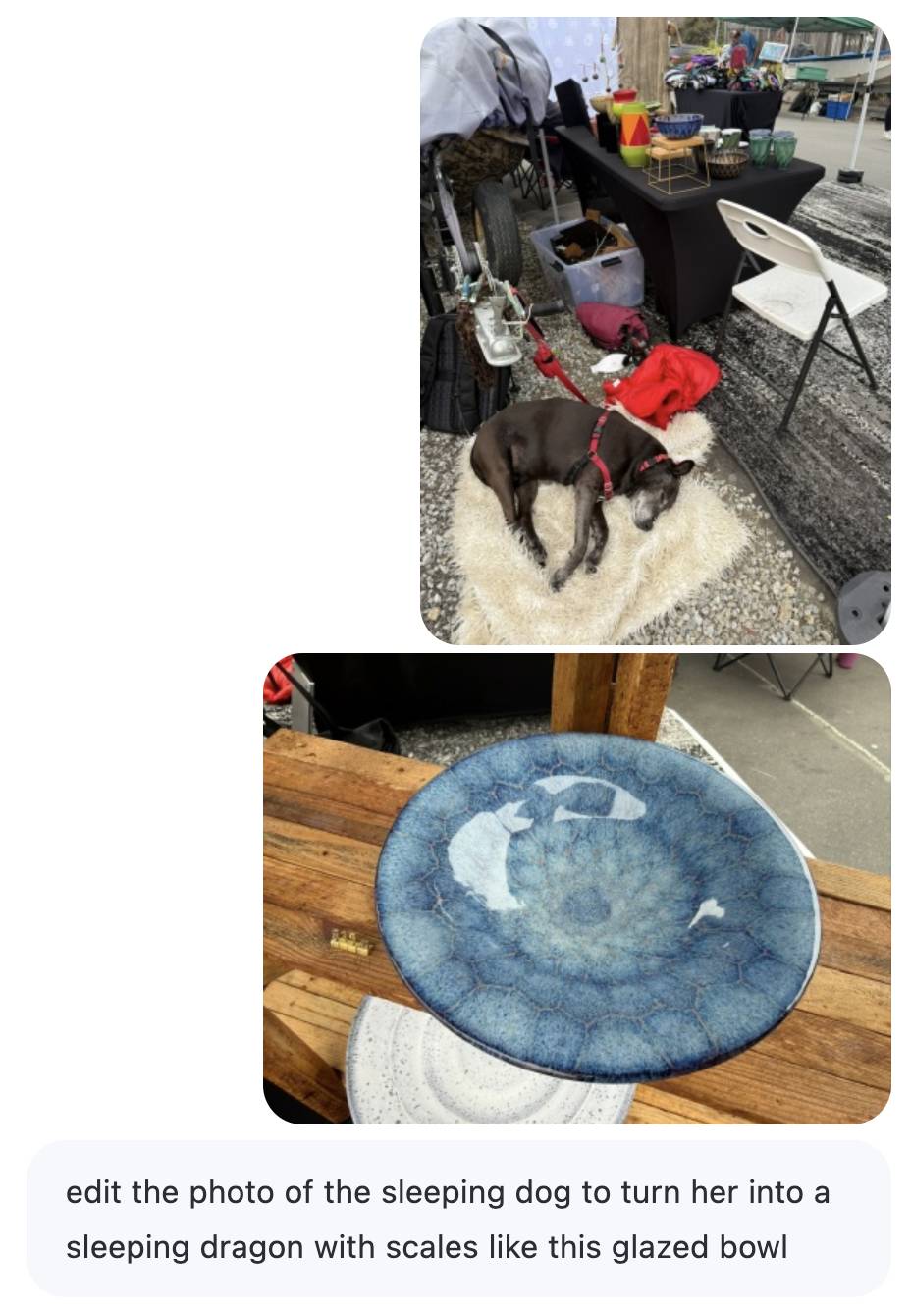
Qwen3-Next-80B-A3B. Qwen announced two new models via their Twitter account (and here's their blog): Qwen3-Next-80B-A3B-Instruct and Qwen3-Next-80B-A3B-Thinking.
They make some big claims on performance:
- Qwen3-Next-80B-A3B-Instruct approaches our 235B flagship.
- Qwen3-Next-80B-A3B-Thinking outperforms Gemini-2.5-Flash-Thinking.
The name "80B-A3B" indicates 80 billion parameters of which only 3 billion are active at a time. You still need to have enough GPU-accessible RAM to hold all 80 billion in memory at once but only 3 billion will be used for each round of inference, which provides a significant speedup in responding to prompts.
More details from their tweet:
- 80B params, but only 3B activated per token → 10x cheaper training, 10x faster inference than Qwen3-32B.(esp. @ 32K+ context!)
- Hybrid Architecture: Gated DeltaNet + Gated Attention → best of speed & recall
- Ultra-sparse MoE: 512 experts, 10 routed + 1 shared
- Multi-Token Prediction → turbo-charged speculative decoding
- Beats Qwen3-32B in perf, rivals Qwen3-235B in reasoning & long-context
The models on Hugging Face are around 150GB each so I decided to try them out via OpenRouter rather than on my own laptop (Thinking, Instruct).
I'm used my llm-openrouter plugin. I installed it like this:
llm install llm-openrouter
llm keys set openrouter
# paste key here
Then found the model IDs with this command:
llm models -q next
Which output:
OpenRouter: openrouter/qwen/qwen3-next-80b-a3b-thinking
OpenRouter: openrouter/qwen/qwen3-next-80b-a3b-instruct
I have an LLM prompt template saved called pelican-svg which I created like this:
llm "Generate an SVG of a pelican riding a bicycle" --save pelican-svg
This means I can run my pelican benchmark like this:
llm -t pelican-svg -m openrouter/qwen/qwen3-next-80b-a3b-thinking
Or like this:
llm -t pelican-svg -m openrouter/qwen/qwen3-next-80b-a3b-instruct
Here's the thinking model output (exported with llm logs -c | pbcopy after I ran the prompt):

I enjoyed the "Whimsical style with smooth curves and friendly proportions (no anatomical accuracy needed for bicycle riding!)" note in the transcript.
The instruct (non-reasoning) model gave me this:

"🐧🦩 Who needs legs!?" indeed! I like that penguin-flamingo emoji sequence it's decided on for pelicans.
Kimi-K2-Instruct-0905. New not-quite-MIT licensed model from Chinese Moonshot AI, a follow-up to the highly regarded Kimi-K2 model they released in July.
This one is an incremental improvement - I've seen it referred to online as "Kimi K-2.1". It scores a little higher on a bunch of popular coding benchmarks, reflecting Moonshot's claim that it "demonstrates significant improvements in performance on public benchmarks and real-world coding agent tasks".
More importantly the context window size has been increased from 128,000 to 256,000 tokens.
Like its predecessor this is a big model - 1 trillion parameters in a mixture-of-experts configuration with 384 experts, 32B activated parameters and 8 selected experts per token.
I used Groq's playground tool to try "Generate an SVG of a pelican riding a bicycle" and got this result, at a very healthy 445 tokens/second taking just under 2 seconds total:

DeepSeek 3.1. The latest model from DeepSeek, a 685B monster (like DeepSeek v3 before it) but this time it's a hybrid reasoning model.
DeepSeek claim:
DeepSeek-V3.1-Think achieves comparable answer quality to DeepSeek-R1-0528, while responding more quickly.
Drew Breunig points out that their benchmarks show "the same scores with 25-50% fewer tokens" - at least across AIME 2025 and GPQA Diamond and LiveCodeBench.
The DeepSeek release includes prompt examples for a coding agent, a python agent and a search agent - yet more evidence that the leading AI labs have settled on those as the three most important agentic patterns for their models to support.
Here's the pelican riding a bicycle it drew me (transcript), which I ran from my phone using OpenRouter chat.
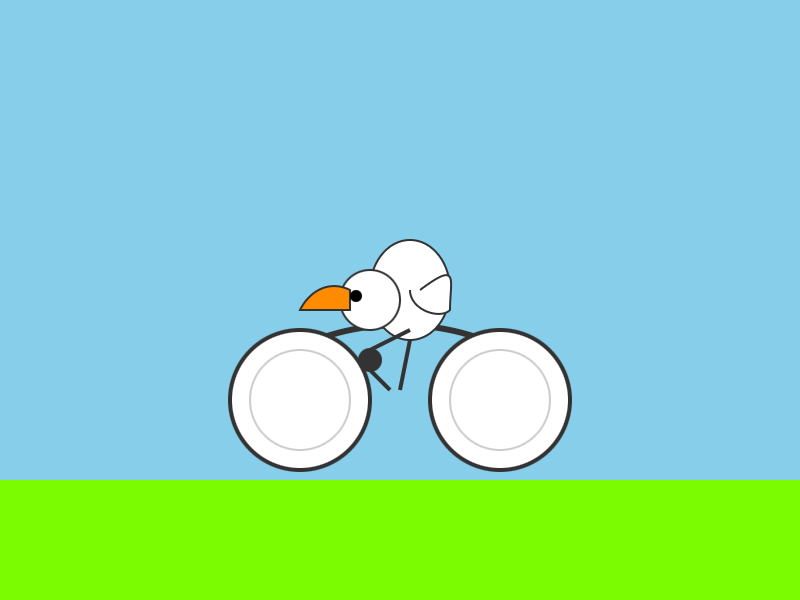
qwen-image-mps (via) Ivan Fioravanti built this Python CLI script for running the Qwen/Qwen-Image image generation model on an Apple silicon Mac, optionally using the Qwen-Image-Lightning LoRA to dramatically speed up generation.
Ivan has tested it this on 512GB and 128GB machines and it ran really fast - 42 seconds on his M3 Ultra. I've run it on my 64GB M2 MacBook Pro - after quitting almost everything else - and it just about manages to output images after pegging my GPU (fans whirring, keyboard heating up) and occupying 60GB of my available RAM. With the LoRA option running the script to generate an image took 9m7s on my machine.
Ivan merged my PR adding inline script dependencies for uv which means you can now run it like this:
uv run https://raw.githubusercontent.com/ivanfioravanti/qwen-image-mps/refs/heads/main/qwen-image-mps.py \
-p 'A vintage coffee shop full of raccoons, in a neon cyberpunk city' -f
The first time I ran this it downloaded the 57.7GB model from Hugging Face and stored it in my ~/.cache/huggingface/hub/models--Qwen--Qwen-Image directory. The -f option fetched an extra 1.7GB Qwen-Image-Lightning-8steps-V1.0.safetensors file to my working directory that sped up the generation.
Here's the resulting image:

Qwen3-4B-Thinking: “This is art—pelicans don’t ride bikes!”
I’ve fallen a few days behind keeping up with Qwen. They released two new 4B models last week: Qwen3-4B-Instruct-2507 and its thinking equivalent Qwen3-4B-Thinking-2507.
[... 991 words]Qwen-Image: Crafting with Native Text Rendering (via) Not content with releasing six excellent open weights LLMs in July, Qwen are kicking off August with their first ever image generation model.
Qwen-Image is a 20 billion parameter MMDiT (Multimodal Diffusion Transformer, originally proposed for Stable Diffusion 3) model under an Apache 2.0 license. The Hugging Face repo is 53.97GB.
Qwen released a detailed technical report (PDF) to accompany the model. The model builds on their Qwen-2.5-VL vision LLM, and they also made extensive use of that model to help create some of their their training data:
In our data annotation pipeline, we utilize a capable image captioner (e.g., Qwen2.5-VL) to generate not only comprehensive image descriptions, but also structured metadata that captures essential image properties and quality attributes.
Instead of treating captioning and metadata extraction as independent tasks, we designed an annotation framework in which the captioner concurrently describes visual content and generates detailed information in a structured format, such as JSON. Critical details such as object attributes, spatial relationships, environmental context, and verbatim transcriptions of visible text are captured in the caption, while key image properties like type, style, presence of watermarks, and abnormal elements (e.g., QR codes or facial mosaics) are reported in a structured format.
They put a lot of effort into the model's ability to render text in a useful way. 5% of the training data (described as "billions of image-text pairs") was data "synthesized through controlled text rendering techniques", ranging from simple text through text on an image background up to much more complex layout examples:
To improve the model’s capacity to follow complex, structured prompts involving layout-sensitive content, we propose a synthesis strategy based on programmatic editing of pre-defined templates, such as PowerPoint slides or User Interface Mockups. A comprehensive rule-based system is designed to automate the substitution of placeholder text while maintaining the integrity of layout structure, alignment, and formatting.
I tried the model out using the ModelScope demo - I signed in with GitHub and verified my account via a text message to a phone number. Here's what I got for "A raccoon holding a sign that says "I love trash" that was written by that raccoon":

The raccoon has very neat handwriting!
Update: A version of the model exists that can edit existing images but it's not yet been released:
Currently, we have only open-sourced the text-to-image foundation model, but the editing model is also on our roadmap and planned for future release.
XBai o4 (via) Yet another open source (Apache 2.0) LLM from a Chinese AI lab. This model card claims:
XBai o4 excels in complex reasoning capabilities and has now completely surpassed OpenAI-o3-mini in Medium mode.
This a 32.8 billion parameter model released by MetaStone AI, a new-to-me lab who released their first model in March - MetaStone-L1-7B, then followed that with MetaStone-S1 1.5B, 7B and 32B in July and now XBai o4 in August.
The MetaStone-S1 models were accompanied with a paper, Test-Time Scaling with Reflective Generative Model.
There is very little information available on the English-language web about MetaStone AI. Their paper shows a relationship with USTC, University of Science and Technology of China in Hefei. One of their researchers confirmed on Twitter that their CEO is from KWAI which lead me to this Chinese language article from July last year about Li Yan, formerly of KWAI and now the founder of Wen Xiaobai and evidently now the CEO of MetaStone. www.wenxiaobai.com is listed as the "official website" linked to from the XBai-o4 README on GitHub.
Ivan Fioravanti got it working under MLX in 4bit, 5bit, 6bit, 8bit and 4bit-DWQ sizes. I tried his 6bit one (a 24.81GB download) in LM Studio and had it "Generate an SVG of a pelican riding a bicycle". It thought for 39.49 seconds (thinking trace here) and gave me this:
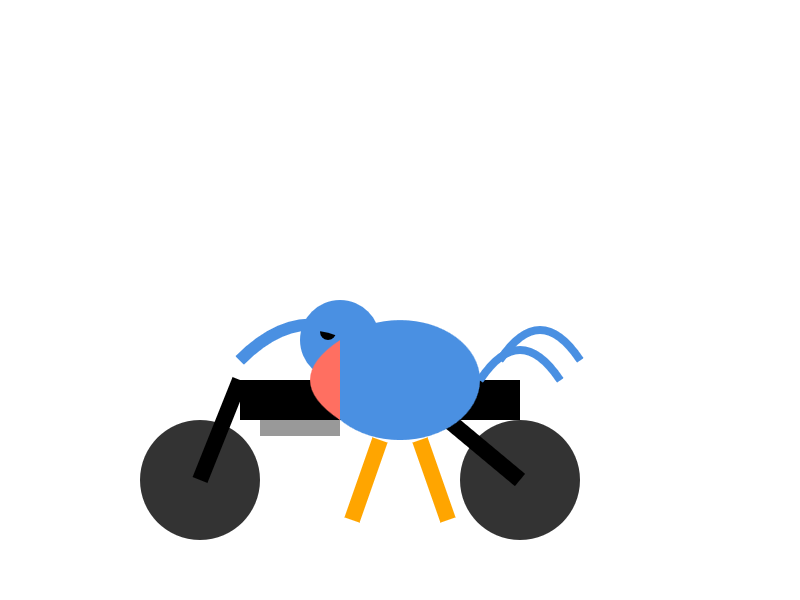
I also had it "Write an HTML and JavaScript page implementing space invaders", which you can try out here. It's not great - the invaders don't fire bullets (it listed that as a "potential improvement") and I don't think it's winnable due to timing issues, but it's an interesting addition to my collection.
LM Studio reported a constant memory usage of 25.54GB and according to Activity Monitor used 87.5% of my GPU and around 39% of a CPU core.
It did a lot of work in the thinking trace - which took 10m35s! - including writing the first draft of much of the code that ended up in the finished result. Here's an extract:
Let me think of variables:
let enemyDirection = 1; // 1 for right, -1 for leftIn the game loop:
enemies.forEach(enemy => {> enemy.x += enemyDirection * enemy.dx;> });Then check if any enemy is out of bounds. If so, reverse direction and move all enemies down.But how to check if any enemy is at the edge?
Maybe find the max x of all enemies and see if it exceeds
canvas.width - enemy.width.Alternatively, track the leftmost and rightmost positions of enemies. Maybe a bit complex.
For simplicity, perhaps check if any enemy's
x + width > canvas.width or x < 0.
Here's the full transcript.
My initial impressions are that I'm not as impressed with this model for running on my own laptop as I was with Qwen3-Coder-30B-A3B-Instruct or GLM-4.5 Air.
But... how extraordinary is it that another Chinese AI lab has been able to produce a competitive model, this time with far less fanfare than we've seen from Qwen and Moonshot AI and Z.ai.
Two interesting examples of inference speed as a flagship feature of LLM services today.
First, Cerebras announced two new monthly plans for their extremely high speed hosted model service: Cerebras Code Pro ($50/month, 1,000 messages a day) and Cerebras Code Max ($200/month, 5,000/day). The model they are selling here is Qwen's Qwen3-Coder-480B-A35B-Instruct, likely the best available open weights coding model right now and one that was released just ten days ago. Ten days from model release to third-party subscription service feels like some kind of record.
Cerebras claim they can serve the model at an astonishing 2,000 tokens per second - four times the speed of Claude Sonnet 4 in their demo video.
Also today, Moonshot announced a new hosted version of their trillion parameter Kimi K2 model called kimi-k2-turbo-preview:
🆕 Say hello to kimi-k2-turbo-preview Same model. Same context. NOW 4× FASTER.
⚡️ From 10 tok/s to 40 tok/s.
💰 Limited-Time Launch Price (50% off until Sept 1)
- $0.30 / million input tokens (cache hit)
- $1.20 / million input tokens (cache miss)
- $5.00 / million output tokens
👉 Explore more: platform.moonshot.ai
This is twice the price of their regular model for 4x the speed (increasing to 4x the price in September). No details yet on how they achieved the speed-up.
I am interested to see how much market demand there is for faster performance like this. I've experimented with Cerebras in the past and found that the speed really does make iterating on code with live previews feel a whole lot more interactive.
Trying out Qwen3 Coder Flash using LM Studio and Open WebUI and LLM
Qwen just released their sixth model(!) of this July called Qwen3-Coder-30B-A3B-Instruct—listed as Qwen3-Coder-Flash in their chat.qwen.ai interface.
[... 1,390 words]Something that has become undeniable this month is that the best available open weight models now come from the Chinese AI labs.
I continue to have a lot of love for Mistral, Gemma and Llama but my feeling is that Qwen, Moonshot and Z.ai have positively smoked them over the course of July.
Here's what came out this month, with links to my notes on each one:
- Moonshot Kimi-K2-Instruct - 11th July, 1 trillion parameters
- Qwen Qwen3-235B-A22B-Instruct-2507 - 21st July, 235 billion
- Qwen Qwen3-Coder-480B-A35B-Instruct - 22nd July, 480 billion
- Qwen Qwen3-235B-A22B-Thinking-2507 - 25th July, 235 billion
- Z.ai GLM-4.5 and GLM-4.5 Air - 28th July, 355 and 106 billion
- Qwen Qwen3-30B-A3B-Instruct-2507 - 29th July, 30 billion
- Qwen Qwen3-30B-A3B-Thinking-2507 - 30th July, 30 billion
- Qwen Qwen3-Coder-30B-A3B-Instruct - 31st July, 30 billion (released after I first posted this note)
Notably absent from this list is DeepSeek, but that's only because their last model release was DeepSeek-R1-0528 back in April.
The only janky license among them is Kimi K2, which uses a non-OSI-compliant modified MIT. Qwen's models are all Apache 2 and Z.ai's are MIT.
The larger Chinese models all offer their own APIs and are increasingly available from other providers. I've been able to run versions of the Qwen 30B and GLM-4.5 Air 106B models on my own laptop.
I can't help but wonder if part of the reason for the delay in release of OpenAI's open weights model comes from a desire to be notably better than this truly impressive lineup of Chinese models.
Update August 5th 2025: The OpenAI open weight models came out and they are very impressive.
Qwen3-30B-A3B-Thinking-2507 (via) Yesterday was Qwen3-30B-A3B-Instruct-2507. Qwen are clearly committed to their new split between reasoning and non-reasoning models (a reversal from Qwen 3 in April), because today they released the new reasoning partner to yesterday's model: Qwen3-30B-A3B-Thinking-2507.
I'm surprised at how poorly this reasoning mode performs at "Generate an SVG of a pelican riding a bicycle" compared to its non-reasoning partner. The reasoning trace appears to carefully consider each component and how it should be positioned... and then the final result looks like this:
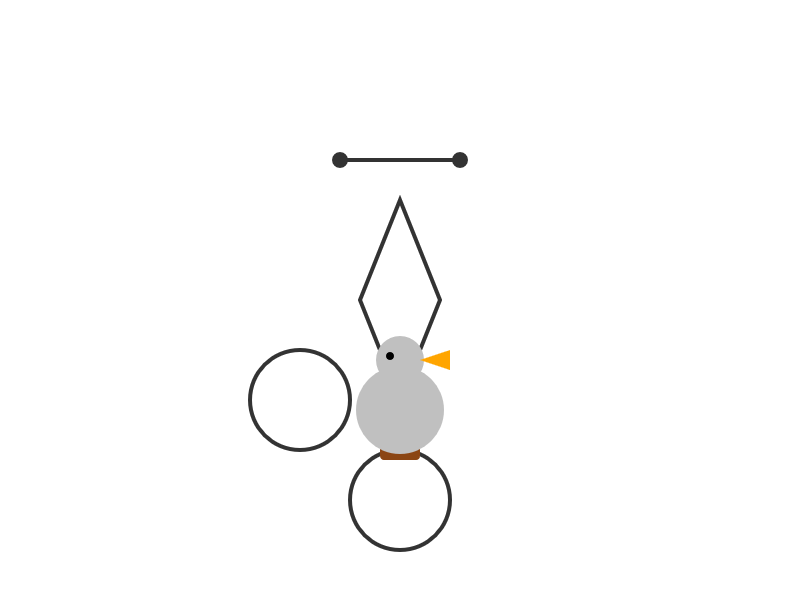
I ran this using chat.qwen.ai/?model=Qwen3-30B-A3B-2507 with the "reasoning" option selected.
I also tried the "Write an HTML and JavaScript page implementing space invaders" prompt I ran against the non-reasoning model. It did a better job in that the game works:
It's not as playable as the on I got from GLM-4.5 Air though - the invaders fire their bullets infrequently enough that the game isn't very challenging.
This model is part of a flurry of releases from Qwen over the past two 9 days. Here's my coverage of each of those:
- Qwen3-235B-A22B-Instruct-2507 - 21st July
- Qwen3-Coder-480B-A35B-Instruct - 22nd July
- Qwen3-235B-A22B-Thinking-2507 - 25th July
- Qwen3-30B-A3B-Instruct-2507 - 29th July
- Qwen3-30B-A3B-Thinking-2507 - today
Qwen3-30B-A3B-Instruct-2507. New model update from Qwen, improving on their previous Qwen3-30B-A3B release from late April. In their tweet they said:
Smarter, faster, and local deployment-friendly.
✨ Key Enhancements:
✅ Enhanced reasoning, coding, and math skills
✅ Broader multilingual knowledge
✅ Improved long-context understanding (up to 256K tokens)
✅ Better alignment with user intent and open-ended tasks
✅ No more<think>blocks — now operating exclusively in non-thinking mode🔧 With 3B activated parameters, it's approaching the performance of GPT-4o and Qwen3-235B-A22B Non-Thinking
I tried the chat.qwen.ai hosted model with "Generate an SVG of a pelican riding a bicycle" and got this:
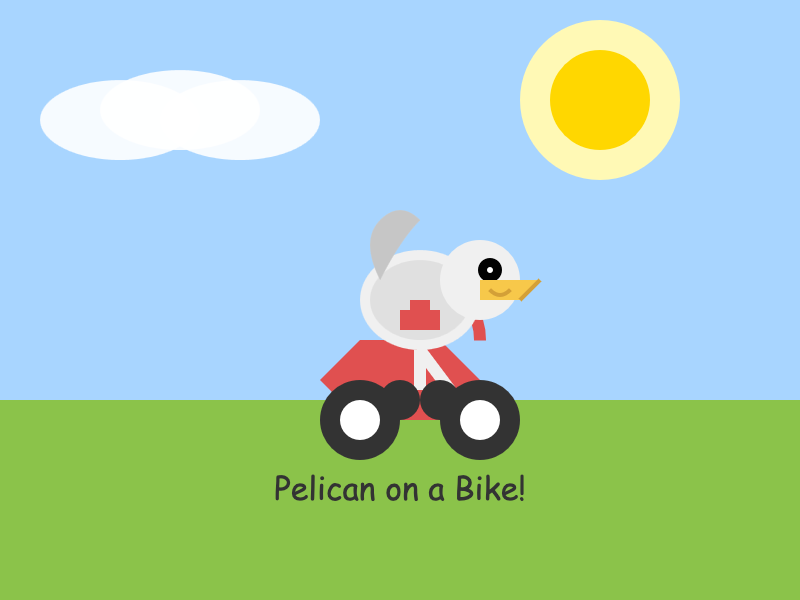
I particularly enjoyed this detail from the SVG source code:
<!-- Bonus: Pelican's smile -->
<path d="M245,145 Q250,150 255,145" fill="none" stroke="#d4a037" stroke-width="2"/>
I went looking for quantized versions that could fit on my Mac and found lmstudio-community/Qwen3-30B-A3B-Instruct-2507-MLX-8bit from LM Studio. Getting that up and running was a 32.46GB download and it appears to use just over 30GB of RAM.
The pelican I got from that one wasn't as good:

I then tried that local model on the "Write an HTML and JavaScript page implementing space invaders" task that I ran against GLM-4.5 Air. The output looked promising, in particular it seemed to be putting more effort into the design of the invaders (GLM-4.5 Air just used rectangles):
// Draw enemy ship ctx.fillStyle = this.color; // Ship body ctx.fillRect(this.x, this.y, this.width, this.height); // Enemy eyes ctx.fillStyle = '#fff'; ctx.fillRect(this.x + 6, this.y + 5, 4, 4); ctx.fillRect(this.x + this.width - 10, this.y + 5, 4, 4); // Enemy antennae ctx.fillStyle = '#f00'; if (this.type === 1) { // Basic enemy ctx.fillRect(this.x + this.width / 2 - 1, this.y - 5, 2, 5); } else if (this.type === 2) { // Fast enemy ctx.fillRect(this.x + this.width / 4 - 1, this.y - 5, 2, 5); ctx.fillRect(this.x + (3 * this.width) / 4 - 1, this.y - 5, 2, 5); } else if (this.type === 3) { // Armored enemy ctx.fillRect(this.x + this.width / 2 - 1, this.y - 8, 2, 8); ctx.fillStyle = '#0f0'; ctx.fillRect(this.x + this.width / 2 - 1, this.y - 6, 2, 3); }
But the resulting code didn't actually work:
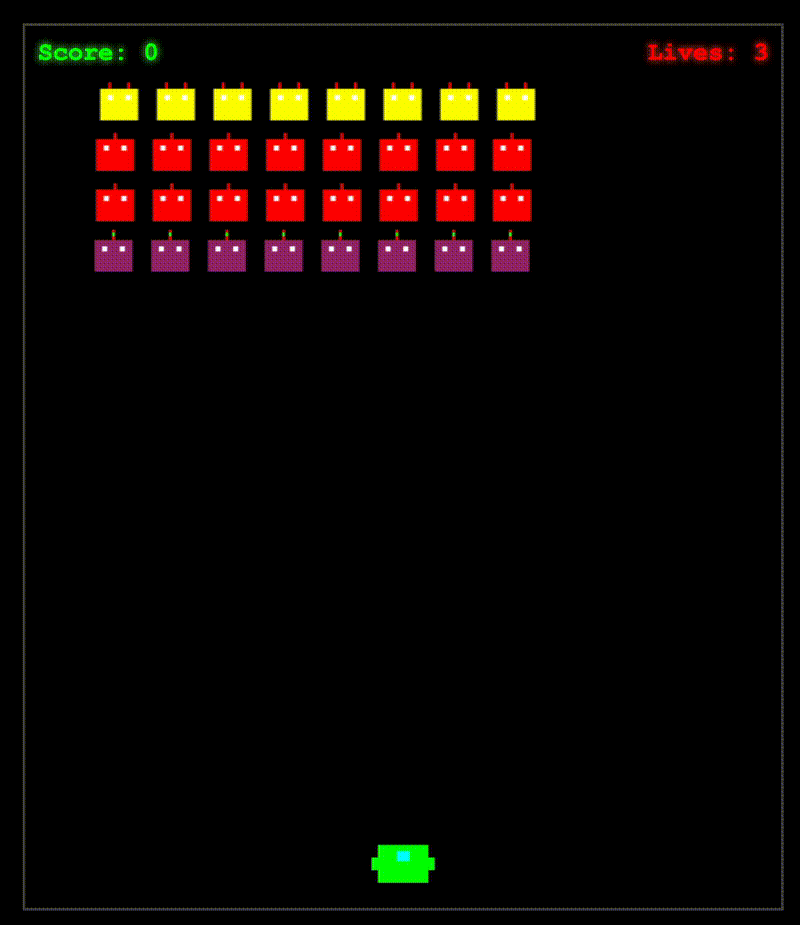
That same prompt against the unquantized Qwen-hosted model produced a different result which sadly also resulted in an unplayable game - this time because everything moved too fast.
This new Qwen model is a non-reasoning model, whereas GLM-4.5 and GLM-4.5 Air are both reasoners. It looks like at this scale the "reasoning" may make a material difference in terms of getting code that works out of the box.
My 2.5 year old laptop can write Space Invaders in JavaScript now, using GLM-4.5 Air and MLX
I wrote about the new GLM-4.5 model family yesterday—new open weight (MIT licensed) models from Z.ai in China which their benchmarks claim score highly in coding even against models such as Claude Sonnet 4.
[... 685 words]GLM-4.5: Reasoning, Coding, and Agentic Abililties. Another day, another significant new open weight model release from a Chinese frontier AI lab.
This time it's Z.ai - who rebranded (at least in English) from Zhipu AI a few months ago. They just dropped GLM-4.5-Base, GLM-4.5 and GLM-4.5 Air on Hugging Face, all under an MIT license.
These are MoE hybrid reasoning models with thinking and non-thinking modes, similar to Qwen 3. GLM-4.5 is 355 billion total parameters with 32 billion active, GLM-4.5-Air is 106 billion total parameters and 12 billion active.
They started using MIT a few months ago for their GLM-4-0414 models - their older releases used a janky non-open-source custom license.
Z.ai's own benchmarking (across 12 common benchmarks) ranked their GLM-4.5 3rd behind o3 and Grok-4 and just ahead of Claude Opus 4. They ranked GLM-4.5 Air 6th place just ahead of Claude 4 Sonnet. I haven't seen any independent benchmarks yet.
The other models they included in their own benchmarks were o4-mini (high), Gemini 2.5 Pro, Qwen3-235B-Thinking-2507, DeepSeek-R1-0528, Kimi K2, GPT-4.1, DeepSeek-V3-0324. Notably absent: any of Meta's Llama models, or any of Mistral's. Did they deliberately only compare themselves to open weight models from other Chinese AI labs?
Both models have a 128,000 context length and are trained for tool calling, which honestly feels like table stakes for any model released in 2025 at this point.
It's interesting to see them use Claude Code to run their own coding benchmarks:
To assess GLM-4.5's agentic coding capabilities, we utilized Claude Code to evaluate performance against Claude-4-Sonnet, Kimi K2, and Qwen3-Coder across 52 coding tasks spanning frontend development, tool development, data analysis, testing, and algorithm implementation. [...] The empirical results demonstrate that GLM-4.5 achieves a 53.9% win rate against Kimi K2 and exhibits dominant performance over Qwen3-Coder with an 80.8% success rate. While GLM-4.5 shows competitive performance, further optimization opportunities remain when compared to Claude-4-Sonnet.
They published the dataset for that benchmark as zai-org/CC-Bench-trajectories on Hugging Face. I think they're using the word "trajectory" for what I would call a chat transcript.
Unlike DeepSeek-V3 and Kimi K2, we reduce the width (hidden dimension and number of routed experts) of the model while increasing the height (number of layers), as we found that deeper models exhibit better reasoning capacity.
They pre-trained on 15 trillion tokens, then an additional 7 trillion for code and reasoning:
Our base model undergoes several training stages. During pre-training, the model is first trained on 15T tokens of a general pre-training corpus, followed by 7T tokens of a code & reasoning corpus. After pre-training, we introduce additional stages to further enhance the model's performance on key downstream domains.
They also open sourced their post-training reinforcement learning harness, which they've called slime. That's available at THUDM/slime on GitHub - THUDM is the Knowledge Engineer Group @ Tsinghua University, the University from which Zhipu AI spun out as an independent company.
This time I ran my pelican bechmark using the chat.z.ai chat interface, which offers free access (no account required) to both GLM 4.5 and GLM 4.5 Air. I had reasoning enabled for both.
Here's what I got for "Generate an SVG of a pelican riding a bicycle" on GLM 4.5. I like how the pelican has its wings on the handlebars:

And GLM 4.5 Air:

Ivan Fioravanti shared a video of the mlx-community/GLM-4.5-Air-4bit quantized model running on a M4 Mac with 128GB of RAM, and it looks like a very strong contender for a local model that can write useful code. The cheapest 128GB Mac Studio costs around $3,500 right now, so genuinely great open weight coding models are creeping closer to being affordable on consumer machines.
Update: Ivan released a 3 bit quantized version of GLM-4.5 Air which runs using 48GB of RAM on my laptop. I tried it and was really impressed, see My 2.5 year old laptop can write Space Invaders in JavaScript now.
Qwen3-235B-A22B-Thinking-2507 (via) The third Qwen model release week, following Qwen3-235B-A22B-Instruct-2507 on Monday 21st and Qwen3-Coder-480B-A35B-Instruct on Tuesday 22nd.
Those two were both non-reasoning models - a change from the previous models in the Qwen 3 family which combined reasoning and non-reasoning in the same model, controlled by /think and /no_think tokens.
Today's model, Qwen3-235B-A22B-Thinking-2507 (also released as an FP8 variant), is their new thinking variant.
Qwen claim "state-of-the-art results among open-source thinking models" and have increased the context length to 262,144 tokens - a big jump from April's Qwen3-235B-A22B which was "32,768 natively and 131,072 tokens with YaRN".
Their own published benchmarks show comparable scores to DeepSeek-R1-0528, OpenAI's o3 and o4-mini, Gemini 2.5 Pro and Claude Opus 4 in thinking mode.
The new model is already available via OpenRouter.
But how good is its pelican?
I tried it with "Generate an SVG of a pelican riding a bicycle" via OpenRouter, and it thought for 166 seconds - nearly three minutes! I have never seen a model think for that long. No wonder the documentation includes the following:
However, since the model may require longer token sequences for reasoning, we strongly recommend using a context length greater than 131,072 when possible.
Here's a copy of that thinking trace. It was really fun to scan through:
![Qwen3 235B A22B Thinking 2507 Seat at (200,200). The pelican's body will be: - The main body: a rounded shape starting at (200,200) and going to about (250, 250) [but note: the pelican is sitting, so the body might be more upright?] - Head: at (200, 180) [above the seat] and the beak extending forward to (280, 180) or so. We'll design the pelican as: - Head: a circle at (180, 170) with radius 15. - Beak: a long triangle from (180,170) to (250,170) and then down to (250,180) and back? Actually, the beak is a long flat-bottomed triangle.](https://static.simonwillison.net/static/2025/qwen-details.jpg)
The finished pelican? Not so great! I like the beak though:

Qwen3-Coder: Agentic Coding in the World (via) It turns out that as I was typing up my notes on Qwen3-235B-A22B-Instruct-2507 the Qwen team were unleashing something much bigger:
Today, we’re announcing Qwen3-Coder, our most agentic code model to date. Qwen3-Coder is available in multiple sizes, but we’re excited to introduce its most powerful variant first: Qwen3-Coder-480B-A35B-Instruct — a 480B-parameter Mixture-of-Experts model with 35B active parameters which supports the context length of 256K tokens natively and 1M tokens with extrapolation methods, offering exceptional performance in both coding and agentic tasks.
This is another Apache 2.0 licensed open weights model, available as Qwen3-Coder-480B-A35B-Instruct and Qwen3-Coder-480B-A35B-Instruct-FP8 on Hugging Face.
I used qwen3-coder-480b-a35b-instruct on the Hyperbolic playground to run my "Generate an SVG of a pelican riding a bicycle" test prompt:

I actually slightly prefer the one I got from qwen3-235b-a22b-07-25.
It's also available as qwen3-coder on OpenRouter.
In addition to the new model, Qwen released their own take on an agentic terminal coding assistant called qwen-code, which they describe in their blog post as being "Forked from Gemini Code" (they mean gemini-cli) - which is Apache 2.0 so a fork is in keeping with the license.
They focused really hard on code performance for this release, including generating synthetic data tested using 20,000 parallel environments on Alibaba Cloud:
In the post-training phase of Qwen3-Coder, we introduced long-horizon RL (Agent RL) to encourage the model to solve real-world tasks through multi-turn interactions using tools. The key challenge of Agent RL lies in environment scaling. To address this, we built a scalable system capable of running 20,000 independent environments in parallel, leveraging Alibaba Cloud’s infrastructure. The infrastructure provides the necessary feedback for large-scale reinforcement learning and supports evaluation at scale. As a result, Qwen3-Coder achieves state-of-the-art performance among open-source models on SWE-Bench Verified without test-time scaling.
To further burnish their coding credentials, the announcement includes instructions for running their new model using both Claude Code and Cline using custom API base URLs that point to Qwen's own compatibility proxies.
Pricing for Qwen's own hosted models (through Alibaba Cloud) looks competitive. This is the first model I've seen that sets different prices for four different sizes of input:
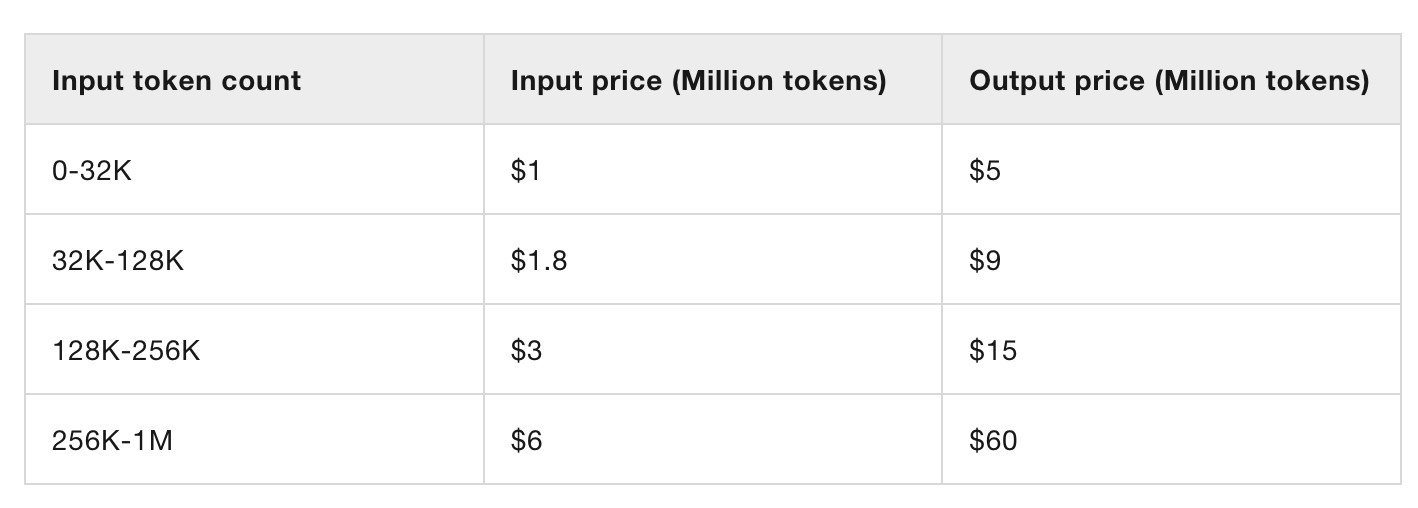
This kind of pricing reflects how inference against longer inputs is more expensive to process. Gemini 2.5 Pro has two different prices for above or below 200,00 tokens.
Awni Hannun reports running a 4-bit quantized MLX version on a 512GB M3 Ultra Mac Studio at 24 tokens/second using 272GB of RAM, getting great results for "write a python script for a bouncing yellow ball within a square, make sure to handle collision detection properly. make the square slowly rotate. implement it in python. make sure ball stays within the square".
Qwen/Qwen3-235B-A22B-Instruct-2507. Significant new model release from Qwen, published yesterday without much fanfare. (Update: probably because they were cooking the much larger Qwen3-Coder-480B-A35B-Instruct which they released just now.)
This is a follow-up to their April release of the full Qwen 3 model family, which included a Qwen3-235B-A22B model which could handle both reasoning and non-reasoning prompts (via a /no_think toggle).
The new Qwen3-235B-A22B-Instruct-2507 ditches that mechanism - this is exclusively a non-reasoning model. It looks like Qwen have new reasoning models in the pipeline.
This new model is Apache 2 licensed and comes in two official sizes: a BF16 model (437.91GB of files on Hugging Face) and an FP8 variant (220.20GB). VentureBeat estimate that the large model needs 88GB of VRAM while the smaller one should run in ~30GB.
The benchmarks on these new models look very promising. Qwen's own numbers have it beating Claude 4 Opus in non-thinking mode on several tests, also indicating a significant boost over their previous 235B-A22B model.
I haven't seen any independent benchmark results yet. Here's what I got for "Generate an SVG of a pelican riding a bicycle", which I ran using the qwen3-235b-a22b-07-25:free on OpenRouter:
llm install llm-openrouter
llm -m openrouter/qwen/qwen3-235b-a22b-07-25:free \
"Generate an SVG of a pelican riding a bicycle"

moonshotai/Kimi-K2-Instruct (via) Colossal new open weights model release today from Moonshot AI, a two year old Chinese AI lab with a name inspired by Pink Floyd’s album The Dark Side of the Moon.
My HuggingFace storage calculator says the repository is 958.52 GB. It's a mixture-of-experts model with "32 billion activated parameters and 1 trillion total parameters", trained using the Muon optimizer as described in Moonshot's joint paper with UCLA Muon is Scalable for LLM Training.
I think this may be the largest ever open weights model? DeepSeek v3 is 671B.
I created an API key for Moonshot, added some dollars and ran a prompt against it using my LLM tool. First I added this to the extra-openai-models.yaml file:
- model_id: kimi-k2
model_name: kimi-k2-0711-preview
api_base: https://api.moonshot.ai/v1
api_key_name: moonshot
Then I set the API key:
llm keys set moonshot
# Paste key here
And ran a prompt:
llm -m kimi-k2 "Generate an SVG of a pelican riding a bicycle" \
-o max_tokens 2000
(The default max tokens setting was too short.)
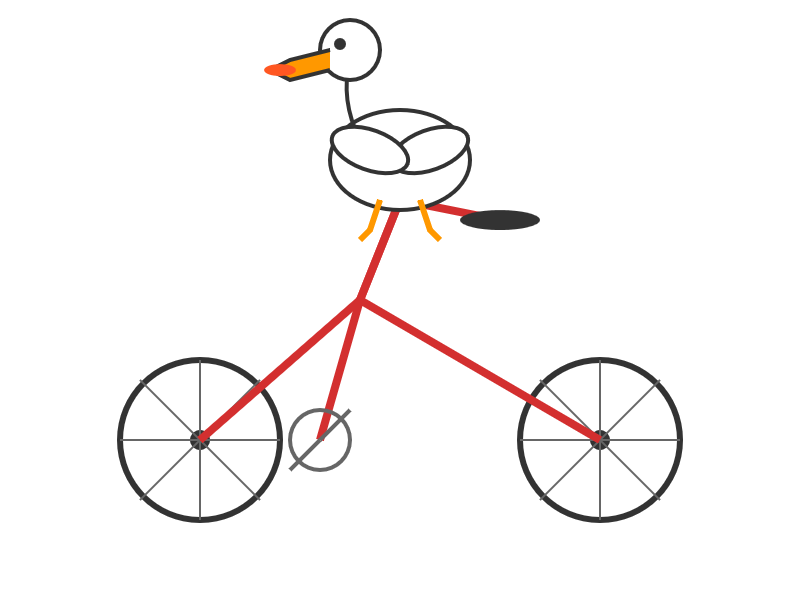
This is pretty good! The spokes are a nice touch. Full transcript here.
This one is open weights but not open source: they're using a modified MIT license with this non-OSI-compliant section tagged on at the end:
Our only modification part is that, if the Software (or any derivative works thereof) is used for any of your commercial products or services that have more than 100 million monthly active users, or more than 20 million US dollars (or equivalent in other currencies) in monthly revenue, you shall prominently display "Kimi K2" on the user interface of such product or service.
Update: MLX developer Awni Hannun reports:
The new Kimi K2 1T model (4-bit quant) runs on 2 512GB M3 Ultras with mlx-lm and mx.distributed.
1 trillion params, at a speed that's actually quite usable
Qwen3 Embedding (via) New family of embedding models from Qwen, in three sizes: 0.6B, 4B, 8B - and two categories: Text Embedding and Text Reranking.
The full collection can be browsed on Hugging Face. The smallest available model is the 0.6B Q8 one, which is available as a 639MB GGUF. I tried it out using my llm-sentence-transformers plugin like this:
llm install llm-sentence-transformers
llm sentence-transformers register Qwen/Qwen3-Embedding-0.6B
llm embed -m sentence-transformers/Qwen/Qwen3-Embedding-0.6B -c hi | jq length
This output 1024, confirming that Qwen3 0.6B produces 1024 length embedding vectors.
These new models are the highest scoring open-weight models on the well regarded MTEB leaderboard - they're licensed Apache 2.0.
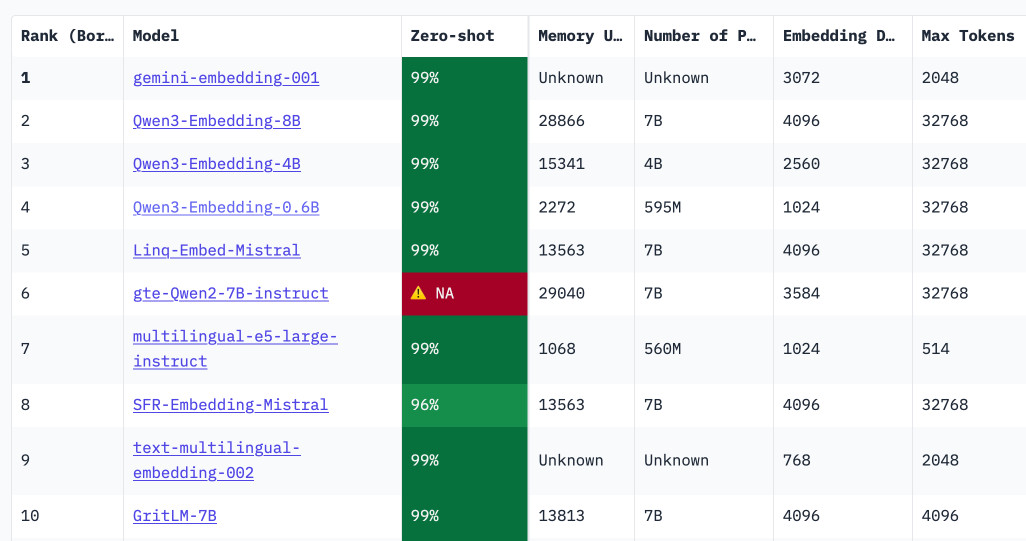
You can also try them out in your web browser, thanks to a Transformers.js port of the models. I loaded this page in Chrome (source code here) and it fetched 560MB of model files and gave me an interactive interface for visualizing clusters of embeddings like this:
